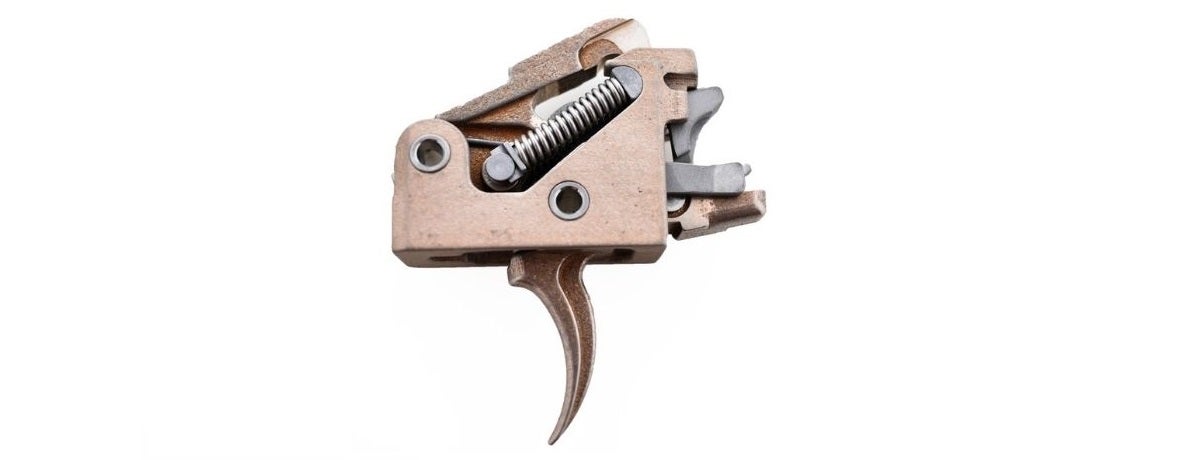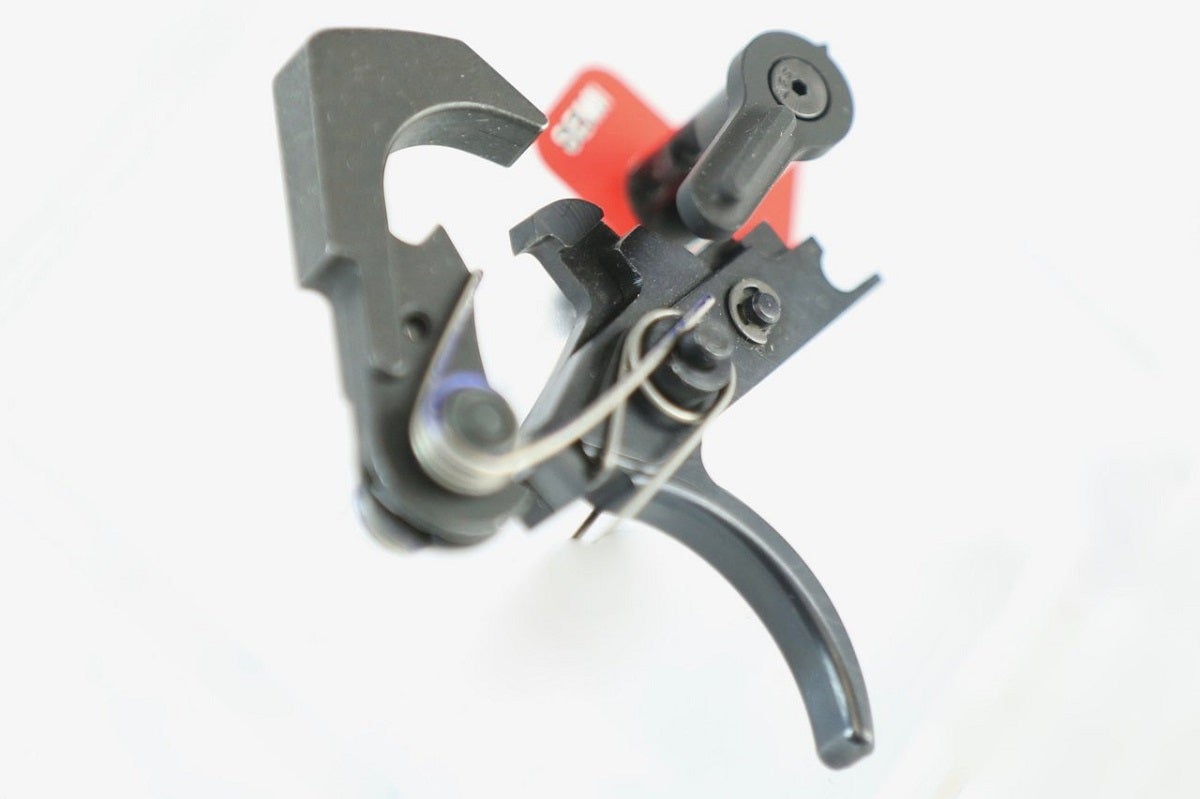Binary Triggers – “Super Semi-Auto” Fun & Frequently Asked Questions
Travis Olander 02.24.23

Ever waste a few bucks worth of ammo with a mad minute? Tapping the trigger as fast as you can, mag-dumpin’ your 30 rounds and laughing it off with your buddies is a range pastime that many of us have enjoyed. What if you could enjoy near full-auto speed without falling afoul of the ATF and federal gun laws? That’s where binary triggers comes into play.
What are Binary Triggers, Exactly?
First, let’s clear up what is a binary trigger isn’t: It’s not a device that makes your firearm capable of providing fully automatic fire. It does not fire more than one round with each pull of the trigger (that’s the basic definition of an auto sear, which are illegal to own unless you’re registered as a Class 3 FFL).
Instead, a binary trigger is a unit that allows your AR fire upon releasing the hammer on both the trigger pull and the trigger release. Both actions — the pull and release — are considered separate, independent functions of the trigger. Franklin Armory’s version of a binary trigger shows off the fast cyclic rate that one can achieve.
How Does a Binary Trigger Work?
Binary triggers use two disconnectors. When the safety selector lever is switched to the typical “FIRE” position, just one disconnector is engaged. This disconnector, and the hammer and trigger itself, mirror the design and function of any other AR-15 fire control group. In this mode, the release of the trigger causes the disconnector to hand the hammer off to the trigger’s sear, which keeps the hammer cocked until it is depressed again.
But when flipped to binary mode, a second disconnector is engaged and its function supersedes the first. In this mode, the second disconnector maintains the hammer in the cocked position until the trigger is released. But upon releasing the trigger, the disconnector doesn’t hand the hammer off to the sear. Instead, it allows the hammer to fall as the trigger is released to its forward position.
Cancelling Binary Function Mid-Fire
Importantly – for safety reasons – the user can engage function or the safety while depressing the trigger in binary mode. Doing so will prevent binary function from occurring if the lever is flipped before the trigger is released.
Binary Triggers Don’t Require Receiver Modifications
Binary triggers are, by and large, drop-in units. That means they quite literally drop into your stripped lower receiver. They’re compatible with the receiver’s factory hammer and trigger pin holes, and safety lever pin hole.
The Best (and Only) Binary Triggers
To be fair, the binary trigger market is pretty niche. So, many manufacturers produce these units. There are, at the time of this publication, just two reputable makers: Franklin Armory, and Fostech Outdoors.
Franklin Armory BFS-III Triggers
Franklin Armory’s the top option when it comes to binary triggers. In addition to their popular AR-C1 and AR-S1 triggers (for the AR-15 and its variants), they produce other BFSIII options for popular platforms like the Ruger 10/22, AK platform, CZ Scorpion, B&T pistols and SBRs, Ruger PC, and a few others. Depending on your flavor, the BFSIII runs between $430 and $500.
Functionality
Regardless of which platform you’re installing the BFSIII in, it’ll always work the same: Safety, semi, and binary options are enabled with the three-position selector lever, and trigger pull weight is typically 5.5 pounds.
Compatibility
Unfortunately, not all calibers have been tested for all the Franklin trigger’s platforms. It’s not guaranteed that the AR-type trigger will work with all receivers and calibers, like, say, 6.5 Creedmoor – not that you’d want to mag dump any of that – and 9mm. Franklin Armory says that regardless of platform, most firearms’ factory bolts will work with the BFSIII, including non-F/A bolt carrier groups in the AR-15.
All available BFSIII triggers provide binary interrupt, should you switch to semi or safe while depressing the trigger. Depending on which option you select, the Franklin trigger may come with different trigger and hammer springs. This is to ensure reliable functionality with various calibers and bolts.
Fostech Echo II Binary Triggers

Functionality
The Fostech Echo II works just like the Franklin Armory. A three-position safety selector provides safe, semi, and binary functionality with binary interrupt available when holding the trigger down and switching from binary to the other safety positions.
For budget builds, Fostech also sells the “Sport” binary trigger. It ditches the external three-position safety for an internal paddle toggle that switches between binary and semi-auto. It’s a simpler design that shaves about $150 off the retail price of the more expensive Echo II.
Compatibility
Fostech says that their triggers will generally work with most available calibers in the AR and AK platforms, but not all have been tested. Unlike the Franklin trigger, the Echo II requires a full-auto bolt carrier group if you’re running one in the AR-15. Any F/A bolt will work, but fostech offers a decent nickel-boron-coated BCG, too.
(You Can’t Have Fun Everywhere)
Unfortunately, some anti-gun states have banned these cool lil’ binary triggers. As of the time of this publication, that list includes: CA, CT, DC, DE, FL, HI, IA, MD, NJ, NY, RI, and WA. For those of you lucky enough to live in the lands of the free, check out our installation of the Franklin Armory trigger in a regular old AR’s 5.56/.223 lower receiver.
